If you are looking for a tutorial type of article giving you the 7 steps on “how to use attribution”. This article is not for you. If you expect to come out of this reading with a magic solution to help you define which budgets should be allocated to the different marketing initiatives you are driving. This article is not for you.
If you are trying to understand what attribution is all about, why everyone keeps on talking about it and most importantly where it is heading to, this article is for you.
Digital is all about measurement. According to a large perception bias, digital initiatives should be all measurable from A to Z, especially the smaller little details. Well, that is the ideal situation. I think that every one of you acting in the real world will agree with me dreams & reality aren’t always the same thing.
Nevertheless, it is true that digital allows us to measure a lot of things. This is very good news because we all know that the customer journey is complex. It requires several touch points between a brand and a user before this one ends up making a conversion (whatever the conversion represents).
The complexity of the customer journey brings two challenges:
- A measurement challenge = the capacity of technically measuring those interactions
- An attribution challenge = the ability to understand the role each interaction played to get the user to the final conversion
How did attribution evolve?
1) Media centric measurement
Let’s start simple and get back a few years earlier. At that point, we started measuring conversions on website to value the investments we were making in online advertising. Over time, marketers started using more and more platforms: Google, Facebook, Bing, etc.
Each of those platforms were using their own pixels/tags to measure conversions on a post click/view cookie delay. What does this mean? Imagine someone clicks on your AdWords ad on Monday, comes back via a Facebook ad on Tuesday and finally comes back on Friday via SEO and makes a purchase. What would happen? Google AdWords would count 1 conversion for Monday’s click. Facebook would count 1 conversion for Tuesday’s click. Summed up those conversions lead us to a business issue as we count 2 conversions while from a business point of view only one was recorded.
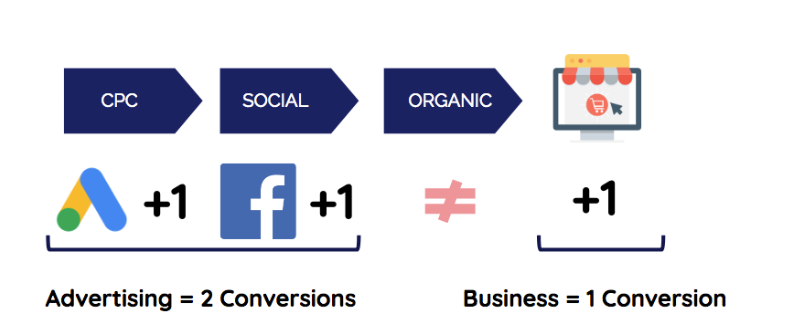
According to me, the business point of view is the starting point and the angle to take as the purpose is to improve business performance and not only advertising performances (even if obviously both are linked somehow). This is also called media-centric measurement. Don’t get me wrong, media-centric measurement is important mainly for the day-to-day management and optimizations of the campaigns, keywords, placements. Nevertheless, at a business level they fail to provide the right picture.
2) Site centric measurement
What were the measurement alternatives to avoid the situation described above? Well, an alternative was the use of Google Analytics (GA) measurement (or any other web analytics platform for that matter). If we go back to the example described above, GA would attribute the conversion to the last interaction. In this case the SEO. From a business point of view this would be more accurate as only 1 conversion would be reported for 1 transaction recorded.
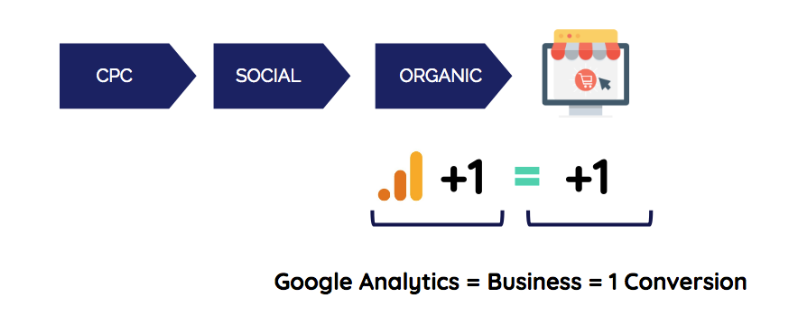
Is GA (or any other Web Analytics platform) the best option? Yes and no:
No: because GA attributes by default all the credits to the last interaction. While we can all agree that all the other interactions have a role to play in convincing the user(s) to convert. Consequently, by looking only at GA we are missing part of the picture.
Yes: because if we would compare GA & Advertising platforms’ advantages and drawbacks, GA is scoring better:

3) The rise of attribution modeling
Luckily GA evolved over time as well. Looking at the default last click non-direct attribution model is good but not enough. This is where the multi-channel funnel (MCF) report comes in. The MCF is interesting because it basically gives us much more information on the “complete” customer paths. Among all, we are now able to play with different attribution models. Instead of giving all the credits to the last interaction we could give it all to the first one or we could break it up equally across the different touchpoints.
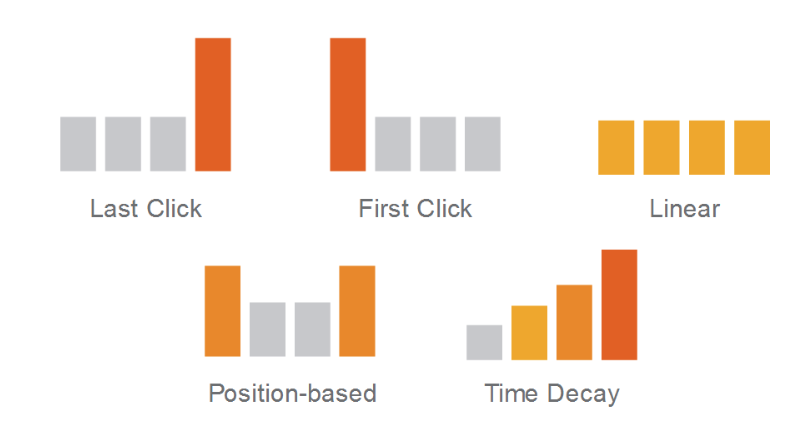
On top of using those default models we could also build our own models simply by subjectively allocating a defined percentage of the total credit to the first, middle and last interactions:
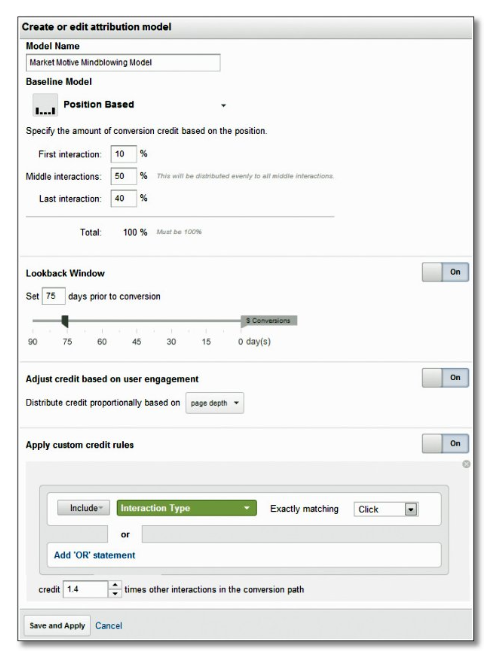
I’m pretty sure that most of you played with those (sick) attribution models. You probably played around for long, testing everything and suddenly having a completely different understanding of your traffic acquisition. Some of you might have even been very confused by those models. More importantly, all of you have probably been completely lost when it came down to answering the most important question: “which attribution model should I use for my business ?”
Well one thing is certain: all the attribution models I mentioned above are bad. Why? They are completely subjective. Why should we choose between giving credit to the first or the last interactions? And how can I decide which one to choose? Well sorry to disappoint you but the answer is that there is no answer…
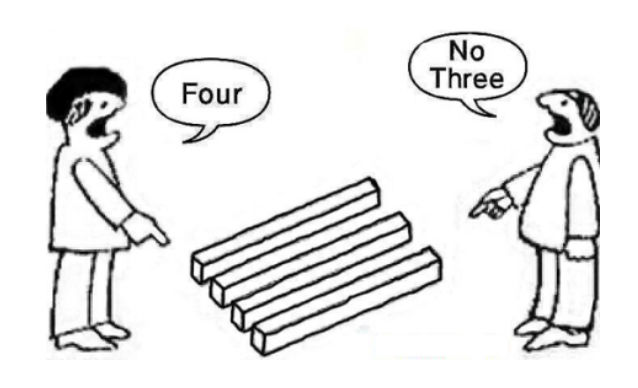
I can hear you tell yourself that criticizing is easy and wondering what my recommendation is? Well it is simply to look at things from a different angle. A concrete methodology would be the following:
- For day to day optimization stick to the default GA last click model. It’s the easiest to use from a reporting & analyzing point of view. It will help you moving fast and being flexible in optimizing your initiatives.
- For important decisions such as stopping to invest in certain acquisition channels always make sure to get into a deeper analysis over a longer time frame looking at results from different angles (attribution models) before taking any decisions. From those analysis two outputs are possible:
4) Data-driven attribution modeling - the savior
Today things have evolved. While I believe the methodology still applies, Google also came up with new solutions to our problems.
The first one being the data-driven attribution model (DDA). What is it? The first objective attribution model that, based on machine learning, looks at all the customer paths that lead to a conversion and compare the importance of every single touchpoint. Based on that it gives a certain credit to every touchpoint of every path:
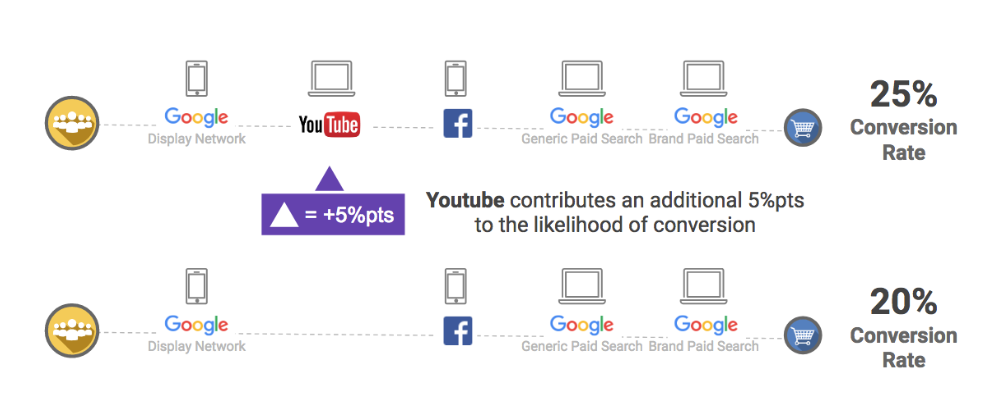
Please refer to a previous article we wrote for more details on how DDA works.
The second solution Google came up with was Google Attribution. A tool with an amazing promise. The promise of being able to apply the data-driven model to every source of traffic, for different types of interaction (sessions, clicks, impressions, views) and more importantly cross devices. The last two elements were the key differentiators with GA’s attribution model report as DDA was already available in GA for what was called GA Premium before and is now referred to as GA360.
AMAZING !
Unfortunately, it didn’t last long. At Semetis we had the opportunity to beta test the tool for 2 of our clients but quickly Google decided the tool was not ready and decided to close the rollout to keep on improving it while focussing on other priorities.
5) Omnichannel Baby !
Other priorities you said ?! It actually did not take long before we heard about a new feature in the field of attribution. But before I present those let’s step back a little.
While all those attribution discussions were happening, another important trend appeared. The ability to measure the link(s) between the online & offline worlds. At that point, it was not anymore being able to measure what was happening online but also to measure the impact of online advertising on offline behaviors. Obviously this was something every advertiser was convinced off. Nevertheless only very few (or very expensive) solutions existed to make it tangible.
End of 2017, beginning of 2018 is the moment chosen by all the big players (Facebook, Google, and even Bing) to progressively rollout their omnichannel measurement solutions. From store visits to store sales. The first one giving us the link between a click on an ad or a session on the website and a visit in a store. While the second one focussed on linking clicks/sessions with transactions data that would be shared directly from the stores.
If you are interested in this topic I’m putting here links to two other articles I wrote: (1) on how does omnichannel measurement work and (2) on why Google is leading the way there.
6) Adding another brick
Omnichannel measurement is great. It definitely has a big impact on the way people would consider and understand the role of digital. On the other hand, it is also adding another complexity. Indeed looking back at attribution, the purpose now is not only in understanding the role each digital touchpoint played to bring an online conversion but also that impacts offline sales:
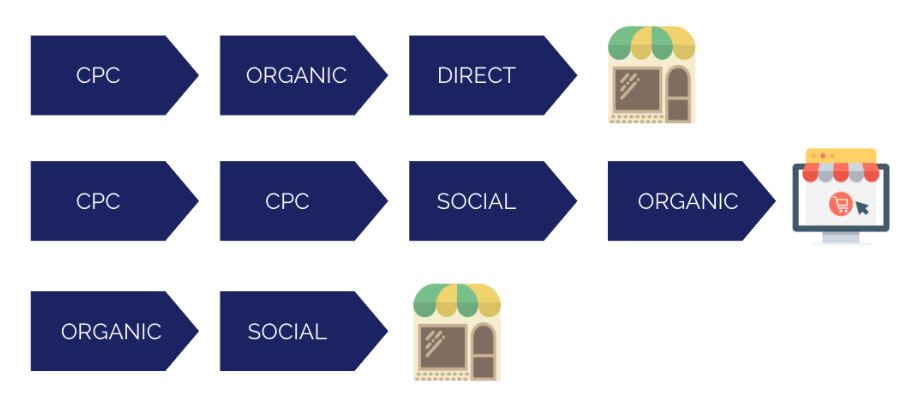
Is this the reason why Google Attribution was rolled back? Maybe Google saw that the added value of the tool at the moment they launched it for the first time was not big enough while the whole omnichannel measurement discussion was growing bigger and bigger.
7) Putting it all together
The story is not over yet. If we look at the future there is another complexity we will have to take into account. Tomorrow most of the media purchases will be programmatic (TV, radio, etc.). Meaning they will be bought through the use of programs (digital).
This is great ! Again it will help us better measure the role of every touchpoint. On the other side, it will also add a complexity in the attribution field as we will then have to understand the role each touchpoint (not only digital anymore) played to bring online and/or offline conversions.
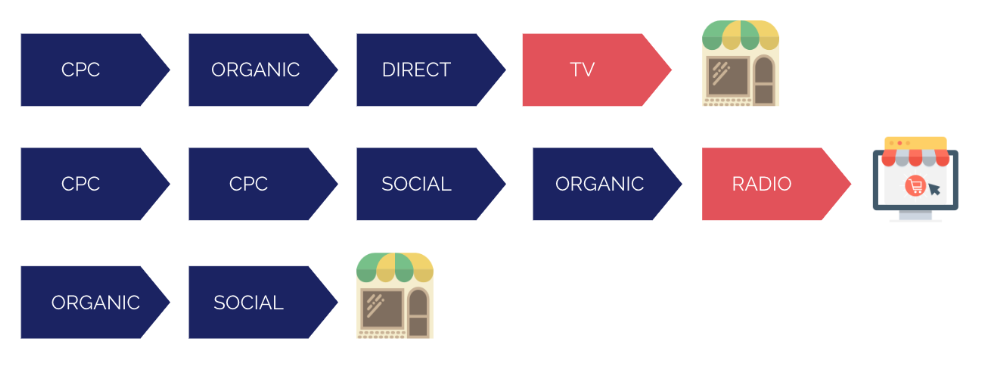
Conclusion - my 2 cents
Every day becomes a bit more complex. Technologies keep on evolving and follow Moore’s law. Looking at attribution the main questions remain:
1) Will we ever have a tool that will tell us how to split our budget? I’m doubting it will be the case. As you can see things are only getting more complex and so far we still don’t have a technology able to solve half of the situation. We also see more and more technologies appearing which is adding the complexity of bridging data together in a coherent way.
2) How should we proceed? I guess that a methodology is more important than the tools itself. Obviously we need to liaise on the available tools and the one that will be launched in the weeks/months ahead. Nevertheless, as it will probably never give us the total understanding of the picture, remaining open-minded, looking at things from different angles and applying a test & learn approach is probably the best advice to help you move forward with your attribution projects.



